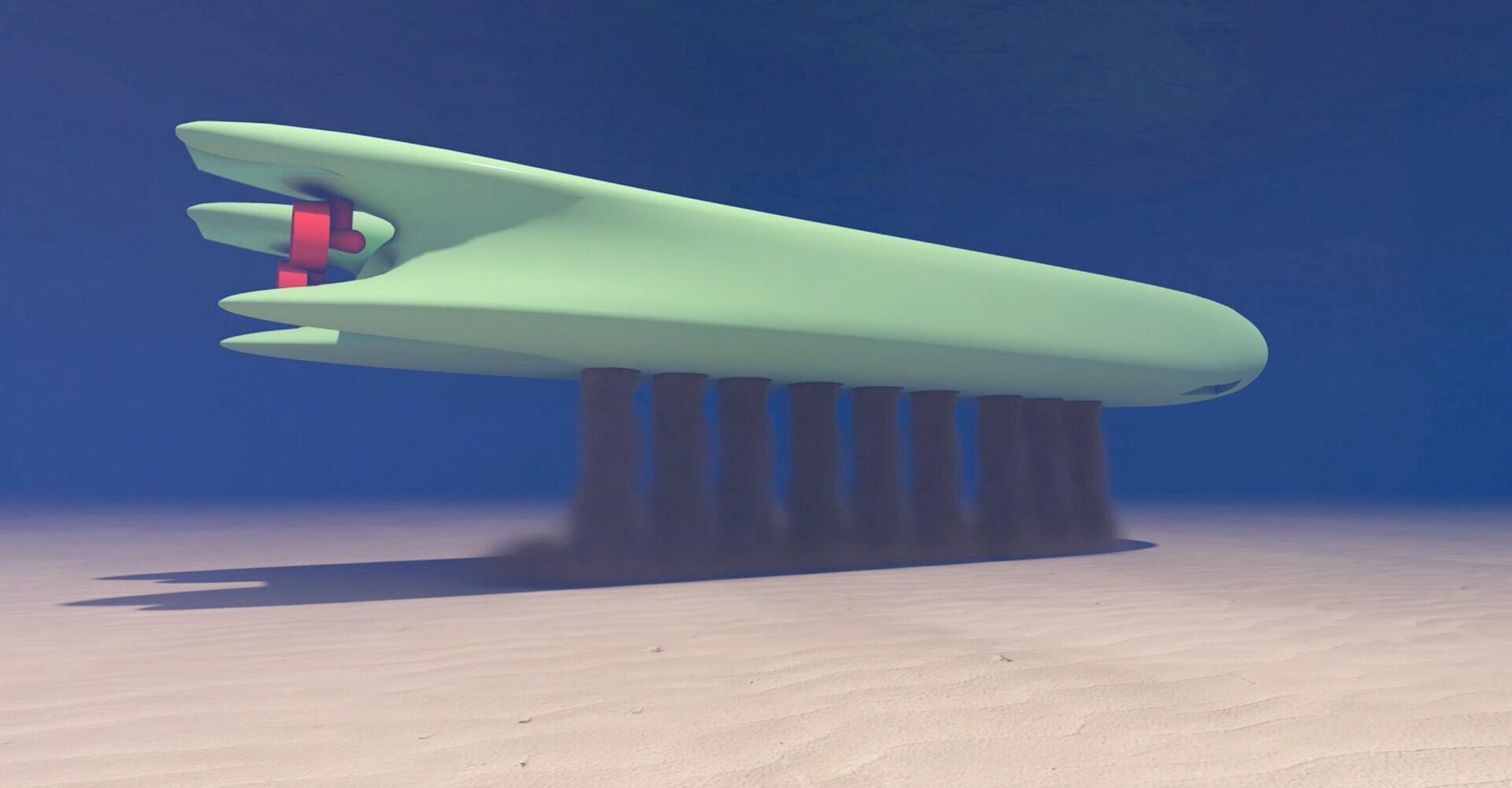Autonomous Low Energy Replenishment Dredger
Following on from our work on the Autonomous Underwater Maintenance Dredger (AUMD) in 2020, we were invited by the Dutch Rijkswaterstaat to contribute to its ‘Innovaties in de Kustlijnzorg’ (IKZ) program. Rijkswaterstaat had issued a tender for a sustainable and cost-effective ‘Solution for Coastal Care’ and in combination with MARIN we were one of the consortia that won the first phase of the tender, with our AUMD concept which fully supported the IKZ programs requirements. As part of this project, we were commissioned to develop the Autonomous Low Energy Replenishment Dredger (ALERD). This built on the work that we did for the AUMD but with a different operational profile; coastal replenishment instead of maintenance work in ports and harbors.
“The design of the submersible ALERD is based on the AUMD,” says C-Job Autonomous Shipping research lead engineer Rolph Hijdra, “but its purpose is to deliver sediment to coastlines to protect the land in a sustainable manner. As with the AUMD, the hopper is designed to always be full of seawater or a mixture of water and sand / sediment, with discharge likewise taking place through the bottom doors in the hull.”
Determining energy requirements
“The feedback we received from a number of Dutch dredging operators throughout the process gave us critical insights for our development process,” continues Rolph Hijdra, “and we started by commissioning a lifecycle assessment. This showed that the overall lifetime environmental cost could be reduced by 83% or more. We also did our own model testing to assess the stability with different loads which, together with simulations that varied the dimensions and power sources, concluded that a vessel with a volume of 2,500m³ with battery power would be the most cost effective solution.”
An operational profile analysis was performed using our own, in-house developed algorithms based on foreshore replenishments carried out by conventional dredgers. These generated data relating to the typical operational area (water depths, sailing distances, etc.), the duration of the dredging cycles, sailed transit speeds and the extent to which the works were carried out on a full-time basis. This will be used for further studies looking at the energy that will be required for stability and buoyancy control and we plan to publish a research paper on this subject this year.
Unfortunately, constraints at this stage of the project did not allow for more in-depth analysis such as tank-testing or CFD analysis. However, the simulation model did enable users to change the main parameters and compare different designs and so optimize the energy consumption required for each operational cycle.
Determining the optimal energy source
To achieve zero emissions requires both low energy requirements and a sustainable electrical energy supply. We undertook a literature review of all the available options, and Li-ion batteries and Proton Exchange Membrane Fuel Cell systems emerged as the best alternatives currently available. Among the studies reviewed were a number that included simulations analyzing variations in factors including different hopper volumes, operating speeds and different charging and bunker locations. These demonstrated that both power sources could deliver lower operational costs compared to the benchmark provided by the IKZ program. Therefore, the choice would depend on individual operational circumstances.
Our participation in the IKZ project came to an end at the close of 2021 since the deadline of having an ALERD operational by 2024 could not be met. However, the concept’s potential was widely recognized. We continue to research and promote the potential benefits of submersible dredgers and industry participants are showing an interest in the development process. Dredging in this way will undoubtedly bring with it a range of as yet unknown challenges compared to traditional dredging, but as the pressure for sustainable solutions grows and the cost of clean energy systems falls, the momentum in this direction can only increase.
To dive even deeper into all of the opportunities that autonomous shipping can bring, C-Job continues our research into the topic and the AUMD concept. Stay tuned to our website and social channels for updates.
